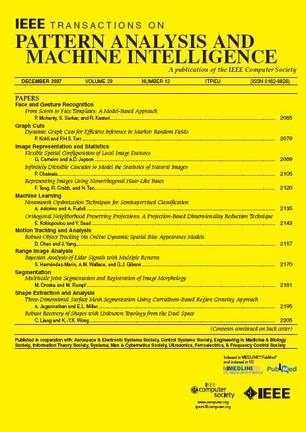Mask-DiFuser:一种用于统一无监督图像融合的mask扩散模型。
IF 18.6
1区 计算机科学
Q1 COMPUTER SCIENCE, ARTIFICIAL INTELLIGENCE
IEEE Transactions on Pattern Analysis and Machine Intelligence
Pub Date : 2025-09-12
DOI:10.1109/tpami.2025.3609323
引用次数: 0
摘要
在大多数融合任务中,地面真值(ground truth, GT)的缺失给模型优化、评估和泛化带来了重大挑战。现有的实现互补上下文聚合的融合方法主要依赖于手工制作的融合规则和复杂的损失函数,这引入了主观性,往往不能适应复杂的现实场景。为了解决这一挑战,我们提出了Mask-DiFuser,这是一种新颖的融合范式,通过将掩膜图像建模与扩散模型结合,巧妙地将无监督图像融合任务转化为双掩膜图像重建任务,克服了由于缺乏GT而产生的各种问题。特别是,我们设计了双掩膜方案来模拟互补信息,并使用扩散模型从两个掩膜输入恢复源图像。从而聚合互补的上下文。部署了具有注意力并行特征混合器的内容编码器,以提取和集成互补特征,提供局部内容指导。此外,我们开发了一个语义编码器来提供全局上下文,并通过交叉注意机制集成到扩散模型中。在推理过程中,Mask-DiFuser从高斯分布开始,根据多源图像对高斯分布进行迭代去噪,直接生成融合图像。掩蔽扩散模型从高质量的自然图像中学习先验,确保融合结果更接近人类的视觉感知。在红外-可见光、医学、多曝光和多焦点图像融合等多种融合任务上进行的大量实验表明,Mask-DiFuser显著优于SOTA融合方案。本文章由计算机程序翻译,如有差异,请以英文原文为准。
Mask-DiFuser: A Masked Diffusion Model for Unified Unsupervised Image Fusion.
The absence of ground truth (GT) in most fusion tasks poses significant challenges for model optimization, evaluation, and generalization. Existing fusion methods achieving complementary context aggregation predominantly rely on hand-crafted fusion rules and sophisticated loss functions, which introduce subjectivity and often fail to adapt to complex real-world scenarios. To address this challenge, we propose Mask-DiFuser, a novel fusion paradigm that ingeniously transforms the unsupervised image fusion task into a dual masked image reconstruction task by incorporating masked image modeling with a diffusion model, overcoming various issues arising from the absence of GT. In particular, we devise a dual masking scheme to simulate complementary information and employ a diffusion model to restore source images from two masked inputs, thereby aggregating complementary contexts. A content encoder with an attention parallel feature mixer is deployed to extract and integrate complementary features, offering local content guidance. Moreover, a semantic encoder is developed to supply global context which is integrated into the diffusion model via a cross-attention mechanism. During inference, Mask-DiFuser begins with a Gaussian distribution and iteratively denoises it conditioned on multi-source images to directly generate fused images. The masked diffusion model, learning priors from high-quality natural images, ensures that fusion results align more closely with human visual perception. Extensive experiments on several fusion tasks, including infrared-visible, medical, multi-exposure, and multi-focus image fusion, demonstrate that Mask-DiFuser significantly outshines SOTA fusion alternatives.
求助全文
通过发布文献求助,成功后即可免费获取论文全文。
去求助
来源期刊
CiteScore
28.40
自引率
3.00%
发文量
885
审稿时长
8.5 months
期刊介绍:
The IEEE Transactions on Pattern Analysis and Machine Intelligence publishes articles on all traditional areas of computer vision and image understanding, all traditional areas of pattern analysis and recognition, and selected areas of machine intelligence, with a particular emphasis on machine learning for pattern analysis. Areas such as techniques for visual search, document and handwriting analysis, medical image analysis, video and image sequence analysis, content-based retrieval of image and video, face and gesture recognition and relevant specialized hardware and/or software architectures are also covered.

 求助内容:
求助内容: 应助结果提醒方式:
应助结果提醒方式:


